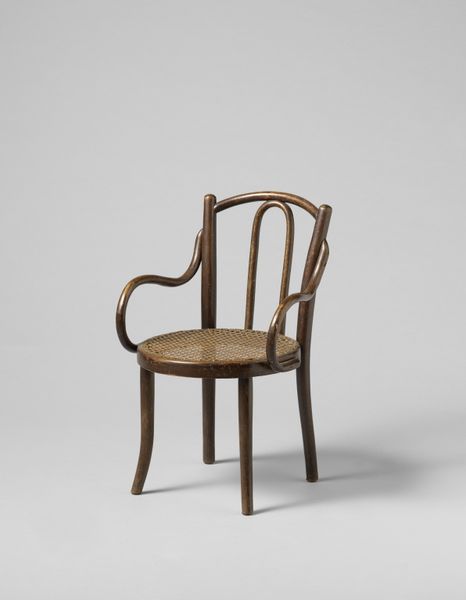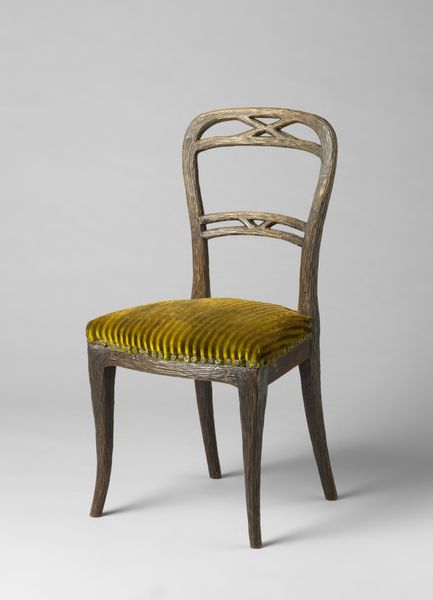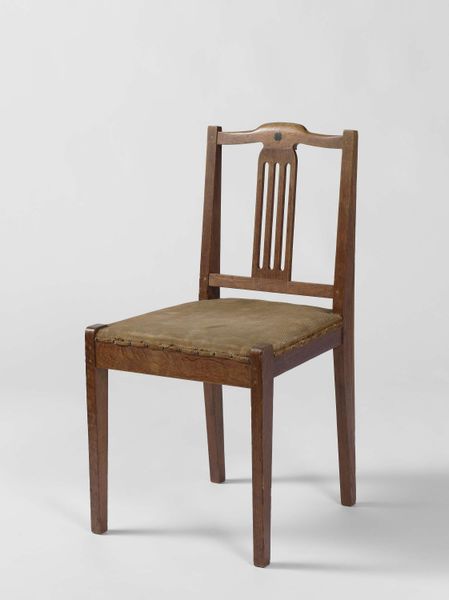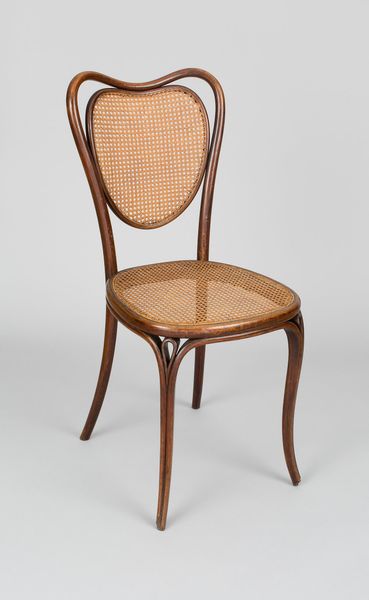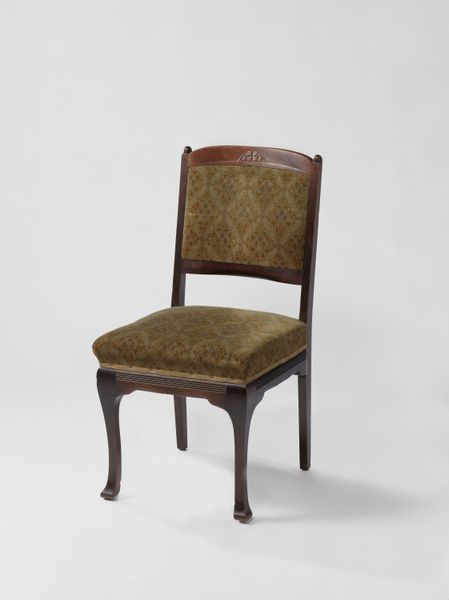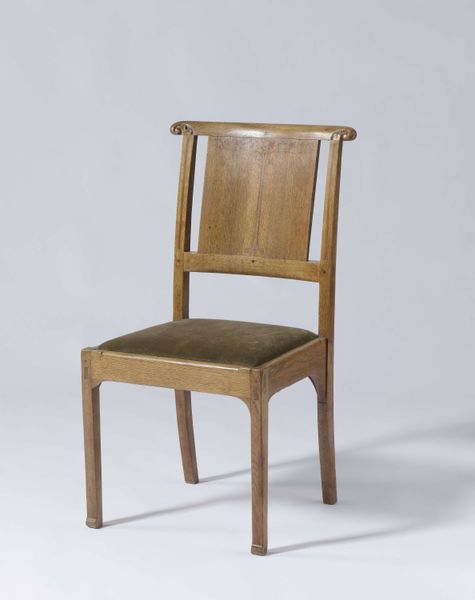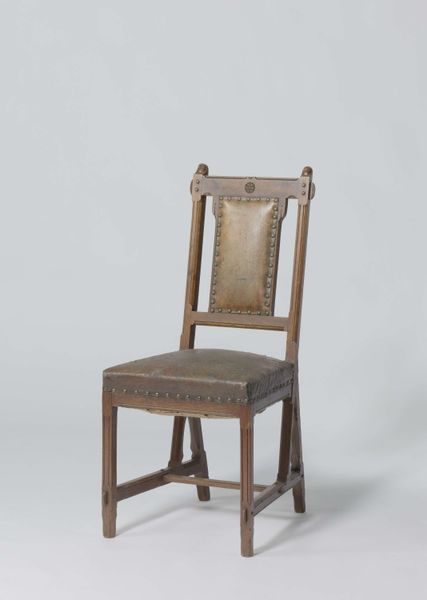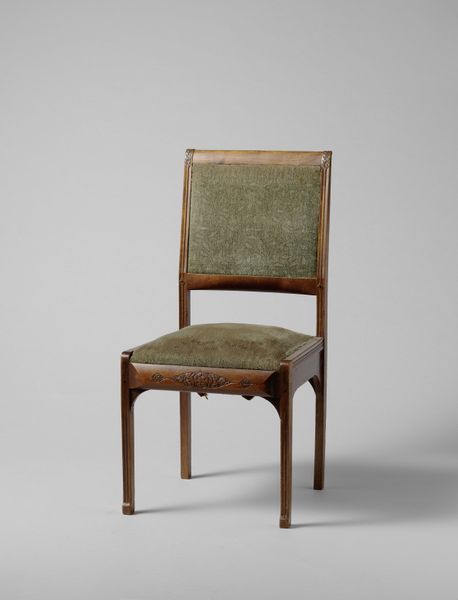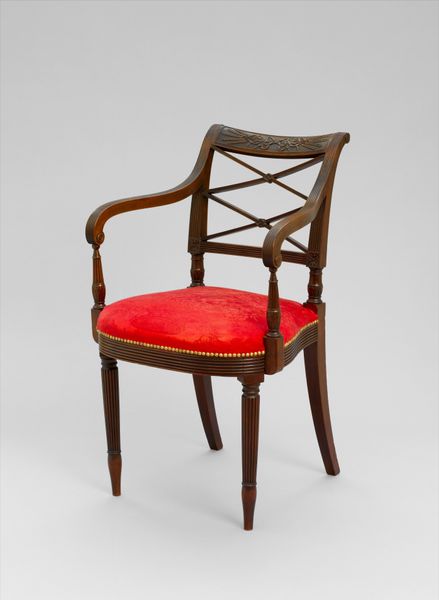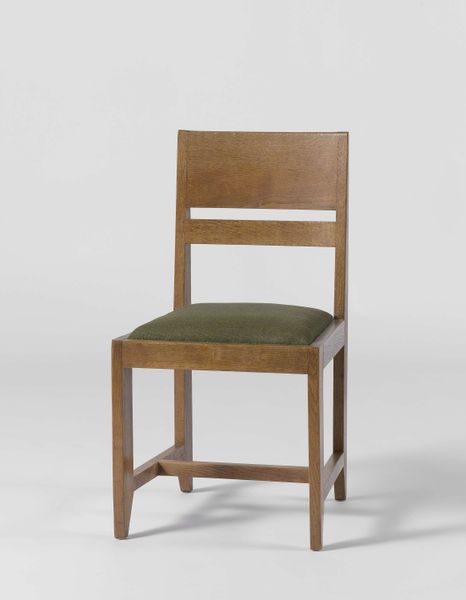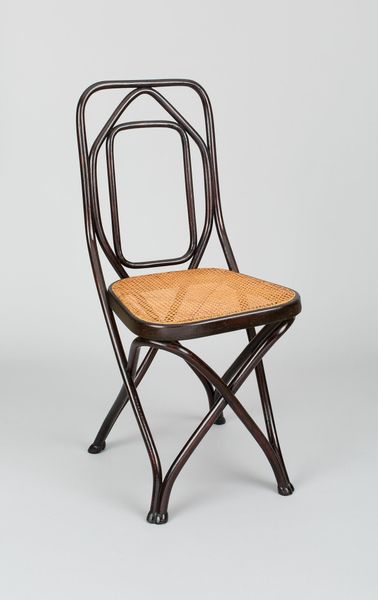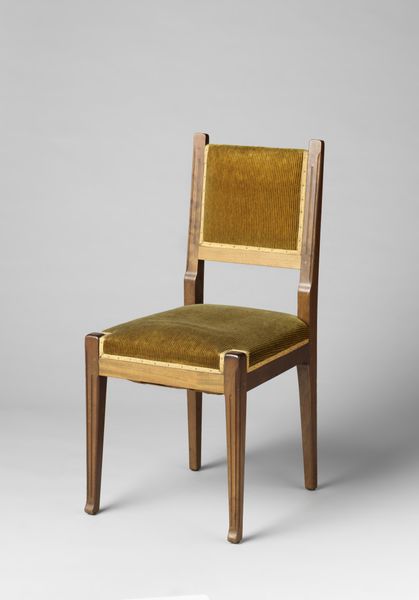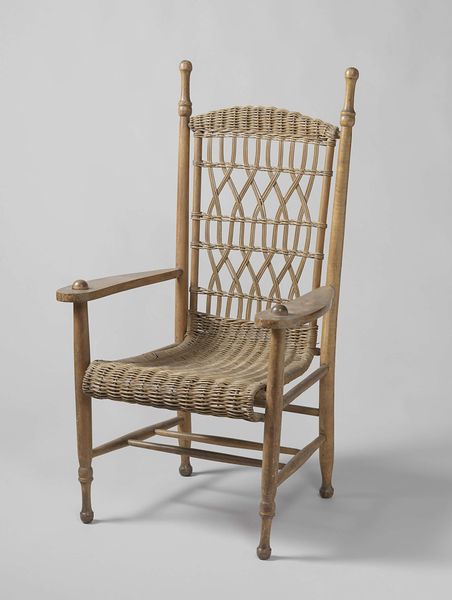
photography, wood
#
furniture
#
photography
#
wood
Dimensions: height 91 cm, width 42 cm, depth 50 cm, weight 3.4 kg
Copyright: Rijks Museum: Open Domain
Editor: This photograph presents "Meubilair," a wooden chair produced by the Gebrüder Thonet, sometime between 1900 and 1987. It appears to be a straightforward, almost humble, design, but the close photography brings out a tactile quality. What story does it tell, for you? Curator: This image foregrounds the very materiality of the object. The wood itself speaks of its origins, its processing, and its transformation through labour. Consider the Thonet brothers' factory. It industrialized furniture production; yet it relied on skilled workers to manipulate the raw material. Editor: That's interesting, I hadn't considered that balance between automation and handcrafting. Curator: Precisely! Note how the design also democratized furniture. Bentwood furniture was easily shipped. Thus, formerly costly furniture became accessible to the burgeoning middle class. The very act of photography, its widespread reproducibility, reinforces this democratizing effect. Where does that leave the individual craftsperson? Editor: So, you're saying it challenges traditional boundaries between 'art' and industrial production? It makes you question the labour and consumption behind it? Curator: Exactly! And consider how mass consumption impacts culture and design. Each object is evidence of global interactions between people and material things, right? Editor: Absolutely. I guess I initially saw just a simple chair, but thinking about it in terms of its production and consumption really opens up a much wider perspective on the piece and it’s time. Curator: Indeed. By focusing on material processes and social contexts, even the simplest object unveils complex layers of meaning.
Comments
No comments
Be the first to comment and join the conversation on the ultimate creative platform.
